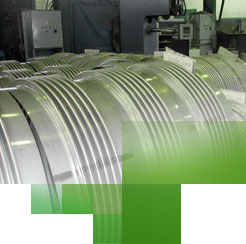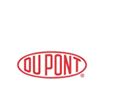Rubber
Rubber expansion joints are used in the whole industrie, power stations and shipbuilding in the transport of cooling water, hot water, gases,oils,fats,foodstuffs, etc. for the absorbation of expansion and/or vibrations.
Because of the very good vibration-dampingproperties, rubber expansion joints are often used behind pumps and engines to prevent damage- or soundtransfer in the pipe. 98% of the sound can be absorbed.
Flanges
By default, our joints are supplied with steel flanges according to DIN PN10. However,the flanges can be supplied in almost every requested material (SS, aluminium, galvanized steel,fiberglas,polypropylene ) and in every preferred drilling ( DIN,ANSI).
Standards
Expansion Joint:
- TÜV - DIN 4809 (on request)
- Approved drinking water KTW (on request)
- DIN 7725 food stuff (on request)
Flanges:
- DIN PN10 (standard version)
- DIN PN16
- ANSI 150 lbs
Special executions
Vacuum applications:
In case of under-pressure till full vacuum, the expansion joint can be delivered with a SS ring.
Movement limiters:
Because rubber expansion joints consists of a soft flexible rubberpart, the expansion joint will perform an axial movement under pressure, as a consequence of his reaction forces.
To limit this axial movement, oval flanges with tie bars can be used ( movement limiters). These movement limiters can be easily modified in length.
Pressure Applications
The allowed operating pressure strongly depends on the dimensions and the construction of the rubber bellow. ( for information please take a look at the data sheets.)
Temperature Range
In general, the temperature range is between -30°C and 120°C, depending of the bellowmaterial.
Advantages rubber expansion joints:
- Short installation length
- Low stiffness ( spring rate)
- Very good vibration- and soundinsulation
- Due to the collar no extra seal is required
- Easy to install
Limitations of expansion joints:
- Temperature resistance, depending on choosen type of rubber.
- Rubber is subject to natural aging.
We offer you a complete program of rubber expansion joints with various possibilities:
-
different rubberqualities with various installation lenghts
- flanges of steel, stainless steel and aluminium
- flange standards according to DIN, ANSI
- wire connections BSP and NPT
- movement limiters in various types
Materials:
Rubberbellows
- EPDM: heat-resistant rubber, suitable for applications with waste water,compressed air ( oil-free) and chemicals.
Not resistant to oils and fats.
Temperature range: -20°C to +120°C - NBR: oil- and fatresistant rubber, ideal for applications with transport of aromatics, solvents and fats,
Not resistant to hot water or steam .
Temperaturerange: -20°C to +90°C
Food graded, white NBR (available on request) - Hypalon® (CSM): chemicalresistant rubber, ideal for transport of chemicals ( acids, bases and lleach).
Temperaturerange: -20°C to +80°C





















 RSS feed
RSS feed